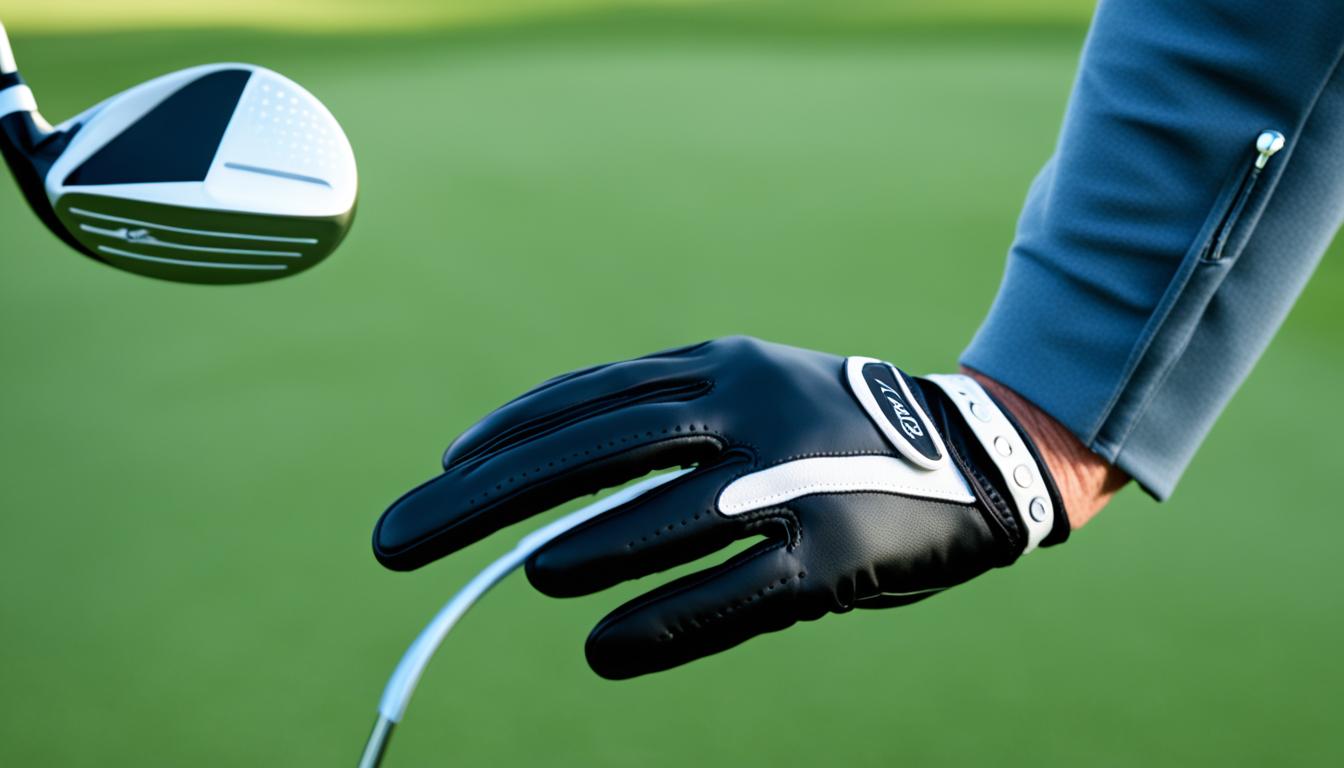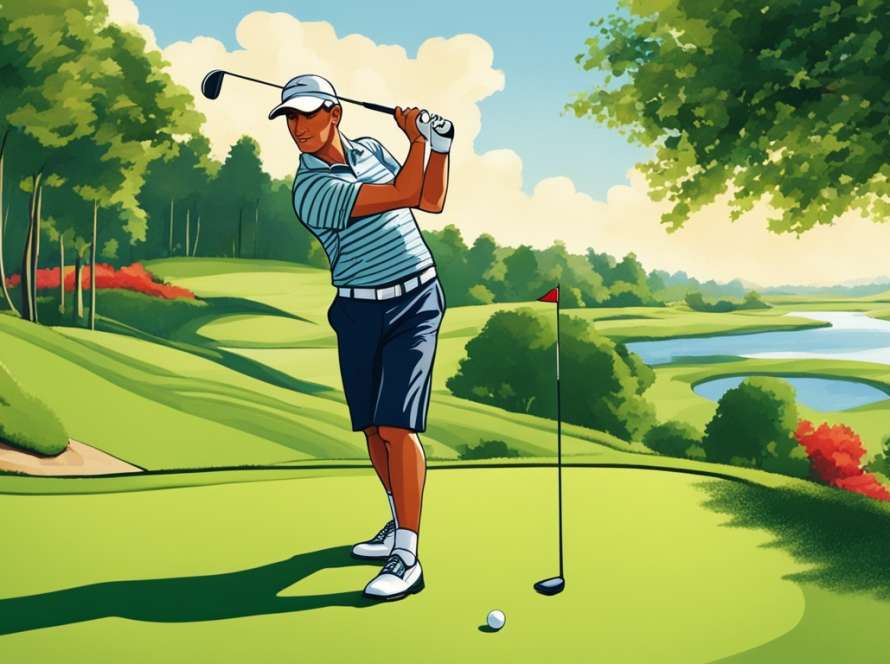Imagine standing on the lush green fairway, the warm sun shining down on you as you prepare to take your swing. Your heart is pounding with anticipation, and every muscle in your body is poised for the perfect shot. As a professional woman golfer, this is the moment you live for. But there’s one question that lingers in your mind: do I always have to wear gloves?
It’s a question that has crossed the minds of many professional women golfers. We strive for excellence on the course, constantly honing our skills and seeking any advantage to improve our game. And the choice to wear gloves during play is not a simple one. It’s a decision that can impact our performance and comfort.
For years, gloves have been a staple accessory on the golf course. They were originally designed to protect against blisters and calluses when golf clubs had rough grips. Today, the rationale for wearing gloves has shifted to improving grip, preventing blisters, reducing tension, and enhancing the release of the hands. And yet, some professional golfers, like Fred Couples, choose not to wear gloves at all.
So, as a professional woman golfer, what should you do? The answer lies in personal preference and what works best for you. Whether you choose to wear gloves or not, the condition of your grip is crucial for optimal performance. So let’s explore the factors that come into play when making this decision.
Are you ready to discover the truth behind the glove debate and gain insights that could revolutionize your game? Join us as we delve into the world of professional women golfers and their choice to wear gloves or go bare-handed during play.
Key Takeaways:
- Professional women golfers have the choice to wear gloves or not during play.
- The historical basis for wearing gloves was to prevent blisters and calluses.
- Modern reasons include better grip, reduced tension, and improved hand release.
- Some professional golfers, like Fred Couples, choose not to wear gloves.
- Golfers prioritize the condition of their grips for optimal performance.
Why do most golfers only wear one glove?
The majority of golfers choose to wear only one glove during play. This common practice is grounded in practicality and performance enhancement. Most golfers opt to wear a single glove on their lead hand, which is the hand that rests on the handle more than the lower hand.
The lead hand is more susceptible to blisters and slipping due to its continuous contact with the club throughout the swing.
By wearing a glove on the lead hand, golfers can mitigate these issues and maintain a secure grip. The glove serves to provide additional grip and reduce the risk of blisters, enhancing control and swing mechanics.
Moreover, wearing two gloves can impact the feedback received from shots and impede the golfer’s feel for the club. In warm and humid conditions, wearing two gloves can also cause discomfort and hinder performance.
While wearing two gloves is not prohibited, the preference for a single glove predominantly stems from individual choice, personal comfort, and maintaining optimal control over the golf swing.
Advantages of wearing a single glove:
- Better grip on the club
- Reduced risk of blisters
- Enhanced control and swing mechanics
- Improved feel for the club
Disadvantages of wearing two gloves:
- Reduced feedback from shots
- Potential discomfort in warm and humid conditions
Ultimately, the decision to wear one glove or two gloves rests with the golfer’s personal preference and feel for the game. Golfers should prioritize finding the glove configuration that allows them to play at their best and experience optimal comfort throughout their rounds.
| Pros of wearing one glove | Cons of wearing two gloves |
|---|---|
| Better grip on the club | Reduced feedback from shots |
| Reduced risk of blisters | Potential discomfort in warm and humid conditions |
| Enhanced control and swing mechanics | |
| Improved feel for the club |
Which hand do golfers wear a glove on?
Golfers wear gloves on the opposite hand of their dominant hand, also known as the lead hand. For right-handed golfers, the glove is worn on the left hand, and for left-handed golfers, it is worn on the right hand. The rationale behind this is that the lead hand, which is placed on top of the grip, plays a critical role in the swing and requires a better grip. The non-dominant hand, on the other hand, is often left bare to provide a better feel for the club and maintain the desired grip with the lead hand.
Wearing a glove on the lead hand offers several advantages during a round of golf:
- Improved grip: The glove helps create a firmer grip on the club, preventing slippage and maintaining control throughout the swing.
- Better feel: The bare hand on the non-dominant hand allows golfers to have enhanced sensitivity and touch, enabling them to feel the club and make subtle adjustments during their swing.
- Reduced friction and blisters: By wearing a glove on the lead hand, golfers can minimize the potential for friction and blisters, which can occur due to the repetitive motion of gripping and swinging the club.
- Consistent swing mechanics: Wearing a glove provides stability and consistency in the grip, leading to more reliable swing mechanics and greater shot accuracy.
While wearing a glove on the lead hand is the standard practice for most golfers, some professional players, like Fred Couples, opt not to wear gloves at all. This choice ultimately comes down to personal preference and the individual golfer’s comfort and feel for the club.
Now that you know which hand to wear a glove on, let’s explore the factors to consider when choosing the right golf gloves in the next section.
Factors to consider when choosing golf gloves
When it comes to choosing golf gloves, there are several important factors to consider. The right glove can significantly impact your performance on the course and provide you with a better grip and enhanced comfort. Here are the key factors you should keep in mind:
- Fit: The fit of the glove is crucial for optimal performance. It should be snug but not too tight, allowing for a secure grip without restricting blood circulation. Take into account the size of your hand and choose the appropriate glove size based on measurements.
- Material: Golf gloves are available in two primary materials: soft leather and synthetic fabric. Soft leather gloves offer a premium feel, excellent grip, and durability, while synthetic gloves generally provide greater breathability and are better suited for warm weather conditions. Consider your personal preferences and the climate you’ll be playing in when choosing the material.
- Care: Proper care of your golf gloves is essential to prolong their lifespan and effectiveness. Avoid excessive moisture, as it can damage the gloves and compromise the grip. After each round, wipe off any dirt or sweat and allow the gloves to air dry. Regularly cleaning and conditioning the gloves can help maintain their quality.
By carefully considering these factors when choosing golf gloves, you can ensure that you have the right fit, material, and care regimen to optimize your performance on the course.
Do golf gloves make a difference in performance?
When it comes to enhancing your performance on the golf course, golf gloves can make a noticeable difference. One of the key advantages of wearing golf gloves is the improved grip they provide. The texture of the glove material helps you maintain a secure hold on the club, preventing it from slipping during your swing, especially in hot or humid weather conditions.
Moreover, golf gloves also play a crucial role in reducing tension in your hands. By wearing a glove, you can relax your grip, allowing for a more fluid and controlled swing. This reduction in tension not only promotes a smoother swing but also helps improve the accuracy and consistency of your shots.
Another benefit of golf gloves is their ability to prevent blisters and calluses. The repetitive motion of gripping and swinging the club can be tough on your hands, leading to discomfort and potential injuries. By providing a protective layer, golf gloves help minimize friction and reduce the risk of developing blisters, allowing you to focus on your game without distractions.
While golf gloves do offer significant advantages, it’s important to note that their impact on performance can vary from player to player. Some golfers may find that they prefer the greater feel and sensitivity of the club without gloves for specific shots or in certain weather conditions. Ultimately, the decision to wear gloves or not comes down to personal preference and what feels most comfortable and effective for each individual golfer.

